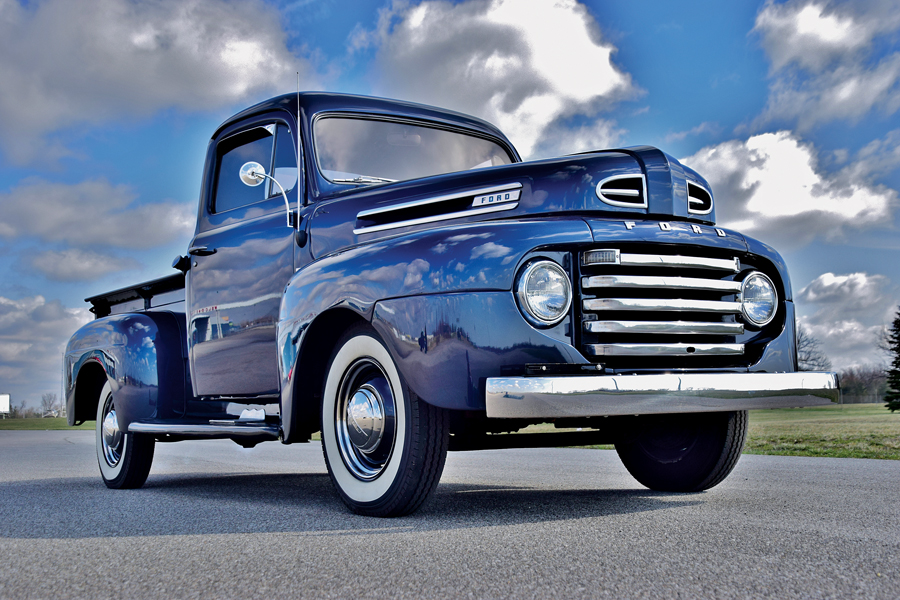- Flathead V8 engine with modern upgrades
- Floor-shift manual transmission
- Mild custom with bucket seats
- Dash and gauges period-correct
- Ford step plates
- Chromed bumpers
- Beautiful finish
- Radio
The brilliant blue paint immediately draws your attention to this restored and mildly customized 1949 Ford pickup. The interior features complementary blue cloth bucket seats in an otherwise seemingly period-correct cabin in mainly a gray tone with the period dashboard and instruments onboard. The truck has a flathead V8 that looks to have been mechanically upgraded for better reliability, with a modern intake manifold and carburetor, plus the ease and peace of mind of a modern oil-filtering system.
The Ford F-1 displays many attractive features that include a finished wood bed floor with bright securing strips, color-keyed steel wheels with trim rings, wide whitewall tires, dual exterior mirrors, radio, chromed bumpers, running-board step plates branded “Ford” and cabin side-window drip guards. Beautiful styling and the detailing with bright trim on the hood and grille add to the character of this sharp Ford pickup.
